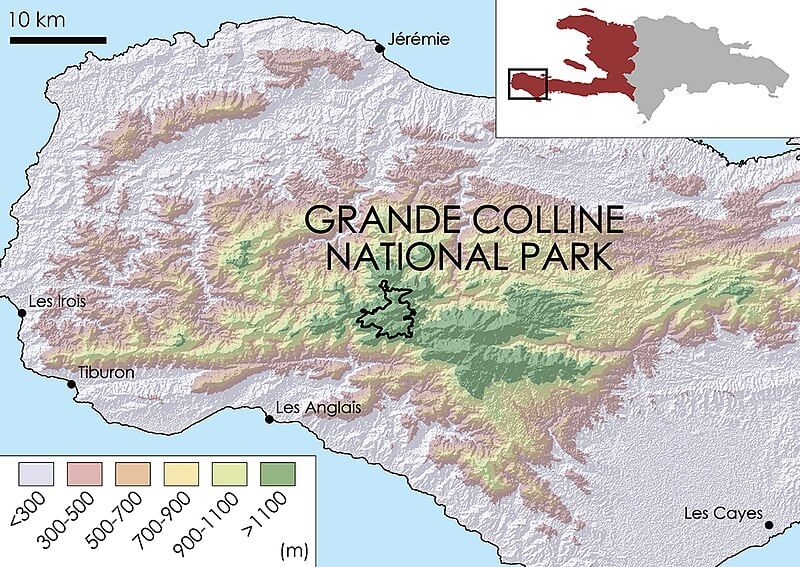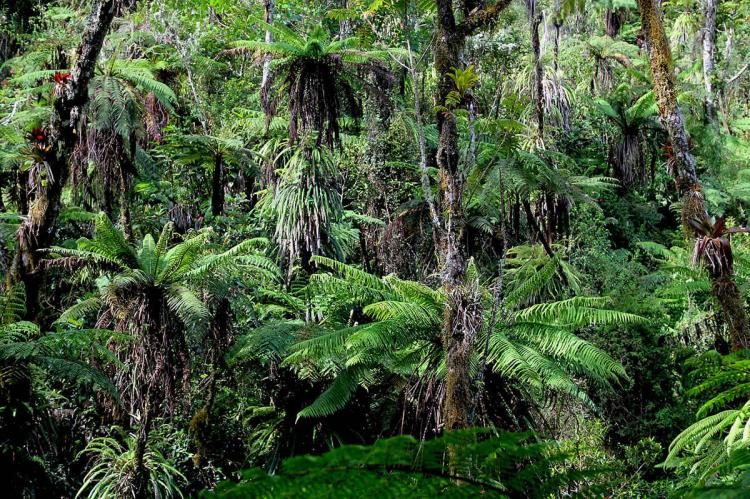Grande Colline National Park (Haiti)
Grande Colline National Park is located in southwestern Haiti and contains the Grande Colline mountain range at the core of the Massif de la Hotte. This protected area includes five named peaks and is one of Haiti's most remote and difficult-to-reach areas.
Grande Colline National Park
Grande Colline National Park is located in southwestern Haiti and contains the Grande Colline mountain range (Chaîne de la Grande Colline), west of the Macaya mountain range and at the core of the Massif de la Hotte. Established in 2014, it has a total area of 1,510 ha (3,731 acres).
Massif de la Hotte is a mountain range in southwestern Haiti on the far-western end of the Tiburon Peninsula. The remote region is one of Hispaniola's most biologically diverse and significant areas. It also supports some of the last stands of Haiti's dense cloud forest on its peaks.
There are five named peaks in Grande Colline National Park:
-
Morne Desbarrières: 1,843 m (6,046 ft)
-
Morne Grande Colline: 2,025 m (6,643 ft)
-
Morne Petite Colline: 1,860 m (6,102 ft)
-
Morne Grenouille: 2,006 m (6,581 ft)
-
Morne Lézard: 1,854 m (6,082 ft)
Grande Colline National Park is one of Haiti's most remote and difficult-to-reach areas. It was explored by the founders of the Haiti National Trust from 2011 - 2015, with the assistance of a helicopter and supported by the National Science Foundation and Critical Ecosystem Partnership Fund.
New species were discovered, and the resulting information on the ecosystem and threats led to the creation of the National Park in 2014. The remarkable biodiversity of the area is just being discovered, including 20 species of frogs (some unique to Grande Colline), 17 species of reptiles and 19 species of birds.
The Grande Colline mountain range is not protected, resulting in widespread tree-cutting and land-clearing activities for building materials, agriculture and charcoal production.
Deforestation is so extensive that little original forest remains except at the highest elevations, almost all above 1,800 m (5,900 ft). Nonetheless, those forests are among the most spectacular in Haiti, with giant tree ferns and hardwoods, some on nearly flat terrain.

Grande Colline National Park topographic map
